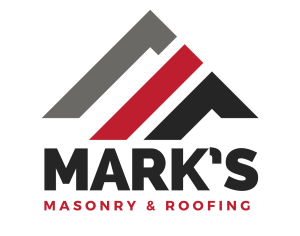Essentially, masonry projects include any work that deals with stone, brick, or concrete. This can include walkways, walls, home exteriors, and more. Masonry units (i.e., stones or bricks) are generally laid and bound together by mortar.
Mortar is a sort of paste that binds stones and bricks together.
It is made up of sand and cement particles. Often, masons specialize in one of the three areas. They are either stonemasons, brick masons, or concrete masons. Though skilled masonry professionals sometimes do all three.
So, fixing those broken bricks, laying a stone walkway, applying concrete sealer, and building that stone fence are all examples of masonry projects. And you should think twice before tackling any of them on your own..jpg)
Call Mark's Masonry and Roofing.
The Right Equipment Matters
Masonry work also requires very specific equipment. Some examples include:
A Trowel
Masonry Saws
Masonry Hammer
Jointers
Mixing Tools
Blocking Chisels
A Mashing Hammer
Mason’s Line
And More
These tools aren’t often in the standard homeowner’s toolset. When avid DIYers don’t have the right tool, they’ll often use whatever they have that’s closest. In masonry work, you can’t use regular tools. Even if you committed to buying the proper equipment, learning how to use them is also challenging.
Plus, when all the costs come in to play, it can be more expensive to get all the right tools than to have hired a professional in the first place.
Masonry Takes Practice to Get Right
On average, it takes about forty to fifty hours of practicing brickwork before you can create a structurally sound wall that looks good. You can’t learn masonry through reading a book or watching a video. You actually have to practice. All that practicing costs time and money. Plus, without an expert there to help with any hiccups, learning on your own can be incredibly difficult.
Bricks are just one type of masonry work, too. Think about stones. Stone is incredibly costly, and unlike manufactured materials, stones don’t have any uniformity. They aren’t soft or malleable, yet in masonry, you have to get rocks to bend to your will. They have to fit in spaces they weren’t meant to fit in. It requires decades of working with stone to understand how to break, saw, and fit it accurately.
Professionals Save Time and Money
While the initial price of masonry work might seem shocking, homeowners who choose to go with the pros often save money in the long run. Like we’ve already discussed, the cost of materials and equipment alone can be astronomical. And you have to figure in the value of the education and experience you get with an actual professional.
While you can argue that you can learn to do it on your own, it doesn’t make much fiscal sense. Plus, the time it would take you to learn and execute would be much more than the time it would take a mason to complete the job.
It Could Hurt Your Home’s Resale Value
Masonry work can add value to your home. With quality masonry work and repairs, you can expect a huge ROI if you sell your home. However, lousy masonry work has the opposite effect.
Those large cracks you see in masonry work are usually caused by poor installation, water damage, or poor maintenance. Even small cracks spell more significant damage in the future. For instance, cracks in a brick home can result in foundation damage later on. That’s why it’s essential that your masonry work is done correctly from the beginning and maintained properly throughout its lifespan.
Four or more bricks arranged around a half-brick space distinguish this visually compelling yet advanced pattern. Each cycle requires cutting a brick, prompting many beginners to purchase pre-cut kits so they can maintain the layout as it repeats. Better suited to straight path designs, Spanish bond patterns accommodate minimal curves and right angles. Achieving precision may warrant hiring masons to guarantee quality results that enhance patios and walkways aesthetically for years.



